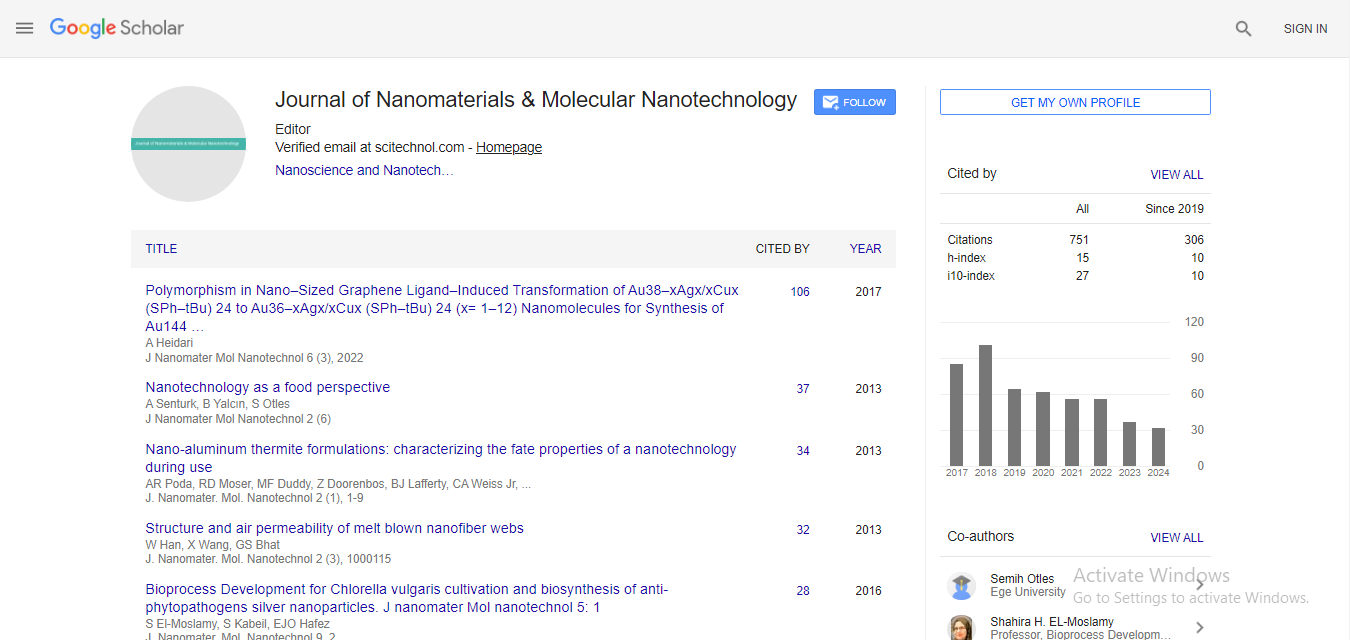Stable and deformable photocapacitor based on ultrathin inorganic n/p-junctions
Fatemeh Zabihi
Donghua University, China
: J Nanomater Mol Nanotechnol
Abstract
State-of-art perovskite photocapacitors suffer from manufacturing complexities, technical impediments and inferior PV yield and storage-to-generation ratio. To surmount these serious setbacks, technical improvements and choice of materials for various parts should be attentively addressed. Systematic manufacturing based on a seamless and practically feasible layout would solve these issues. Hence, in this article, we suggest a simple design for high-efficiency perovskite photocapacitor, integrated by stacking an asymmetric capacitor on a planar inverted multijunction PSC using CH3NH3PbI3 as photoactive layer. The capacitor portion is designed based on a solid-state dielectric layer, asymmetrically packed between two carbon electrodes. The PSC portion employs a CNT/InAlGap/InGap p-type triple-junction on PET/ITO working electrode. An ultrathin (10 nm) C60 is accommodated on active layer for protection, and a 20 nm CNTs single-junction directly connects the capacitor to PSC, providing the synergic functions of back contact for the PSC and the cathode of the capacitor section, as explained earlier. Figures 1(ab) schematically introduces the device architecture and the overall efficiency based on various illumination active area. Numerical modelling can quantitatively characterize, optimize and foresee the potential yielding of perovskite supercapacitors, as for the intrinsic and contingent physical properties of every junction, and certain outdoor triggers. In order to simulate a realistic perovskite photocapacitor the concrete parameters, particularly the effect of grain boundaries, trap sites, interfaces and nonradiative recombination, antireflective coating and unpredictable light intensity on overall performance of integrated system were studied.
Biography
Fatemeh Zabihi is a faculty member in College of Material Science and Engineering in DHU. She has been working as a Post-doctorate Fellow and senior researcher at the University of Michigan-Shanghai Jiao Tong University Joint Institute (2012-2014). According to her strong chemical and engineering background her multidisciplinary research is focused on Thin film Technology and Thin Film Solar Cells, Solution Processing and Solution Engineering, Surface Sciences and surface Phenomena, Coating and Spray Phyrolysis, Thermodynamic and Phase Equilibrium studies.
E-mail: fzabihi@dhu.edu.cn
 Spanish
Spanish  Chinese
Chinese  Russian
Russian  German
German  French
French  Japanese
Japanese  Portuguese
Portuguese  Hindi
Hindi 



